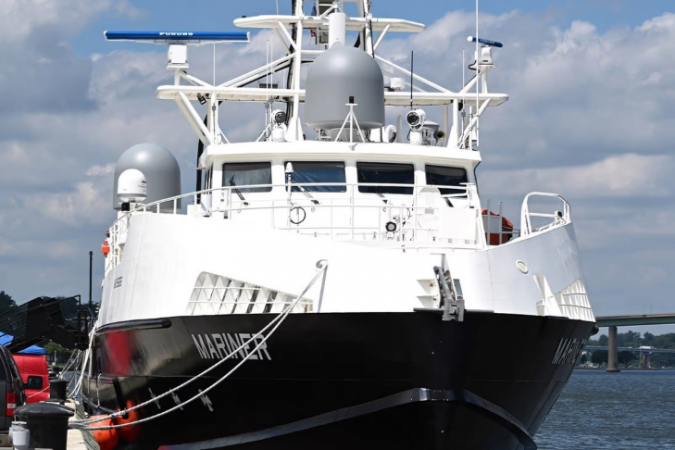
United States: An observer claims that the development of driverless ships by China and the United States, which have the potential to replace maritime warfare, has created a new area for conflict.
As a test vehicle for the service's unmanned/unmanned ship program, the US Navy launched the unmanned surface ship Mariner late last month.
To expedite decision-making and increase "lethality", the US Navy is considering sending crewed warships with one or more unmanned escorts into battle.
According to the US Naval Institute news website USNI, the Mariner is the third vehicle of its kind to be delivered to the US Navy, and is part of Ghost Fleet Overlord, a program to accelerate the Navy's use of autonomous systems.
In order to maintain global dominance in the face of the developing Chinese Navy, the US Navy's Chief of Naval Operations Navigation Plan 2022 calls for 373 manned ships and 150 unmanned vessels.
To that end, the US Navy established the nation's Unmanned Surface Ship Division to "meet the challenges of the 21st century", a unit that lacks a Chinese military counterpart.
However, China is also making progress in unmanned surface ships, albeit at a very slow pace.
The first 200-tonne-class (181-ton) USV built in China successfully completed its first autonomous sea trials in the waters of the eastern province of Zhejiang in June.
To create a 100-ton class, intelligent, autonomous and highly covert USV that can operate quietly in the high seas, Zhejiang-based Beacon Intelligent Technology began research and development on the project in late 2015.
According to Song Zhongping, a former PLA instructor, China's USV needs to increase its capability if it is to complete the full range of tasks.
“USV is mainly used for surveillance and surveillance. According to Song, it will take some time to fulfill all the duties of the manned ships.
He continued by saying that China had an advantage in developing a comprehensive unmanned system because of its development in other unmanned systems such as drones and submersibles.
Unmanned surface craft are capable of performing tasks such as minesweeping, electronic warfare, cargo transport, reconnaissance and data collection.
They can also carry weapons and perform longer and riskier missions than crewed ships, including patrol, force protection, armed escort and anti-surface warfare.
Additional benefits include lower maintenance costs, no risk to crew safety, improved maneuverability and shallow water deployment.
Besides China and the US, other countries that have developed USVs include Canada, Italy, Portugal and Norway for environmental monitoring, reconnaissance and coastal surveys.
According to Timothy Heath, senior analyst at the US think tank RAND Corporation, unmanned surface ships could change maritime conflict.
"The ability of unmanned ships to remain at sea for exceptionally long periods of time could significantly alter maritime warfare. These ships can be difficult to hide," Heath warned.
Due to the increased power and lower cost of these platforms, naval commanders are also likely to begin integrating unmanned surface and unmanned underwater ships into their combat formations.
Future naval warfare may involve conflicts between small arms of human and robot-propelled ships.
First US-led Indo-Pacific Economic Framework seen as "incredible success"
‘All of Us Are Dead’ star Lomon & Shin Ye Eun to star as leads in new thriller drama
Roadblock in BTS's free Concert, City of Busan Wants HYBE To Bear The Cost, Fans Angered